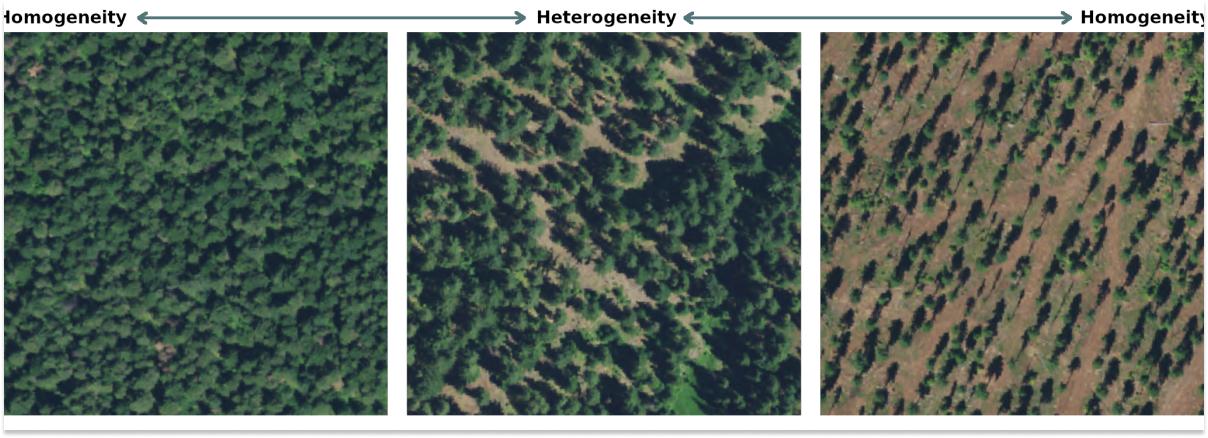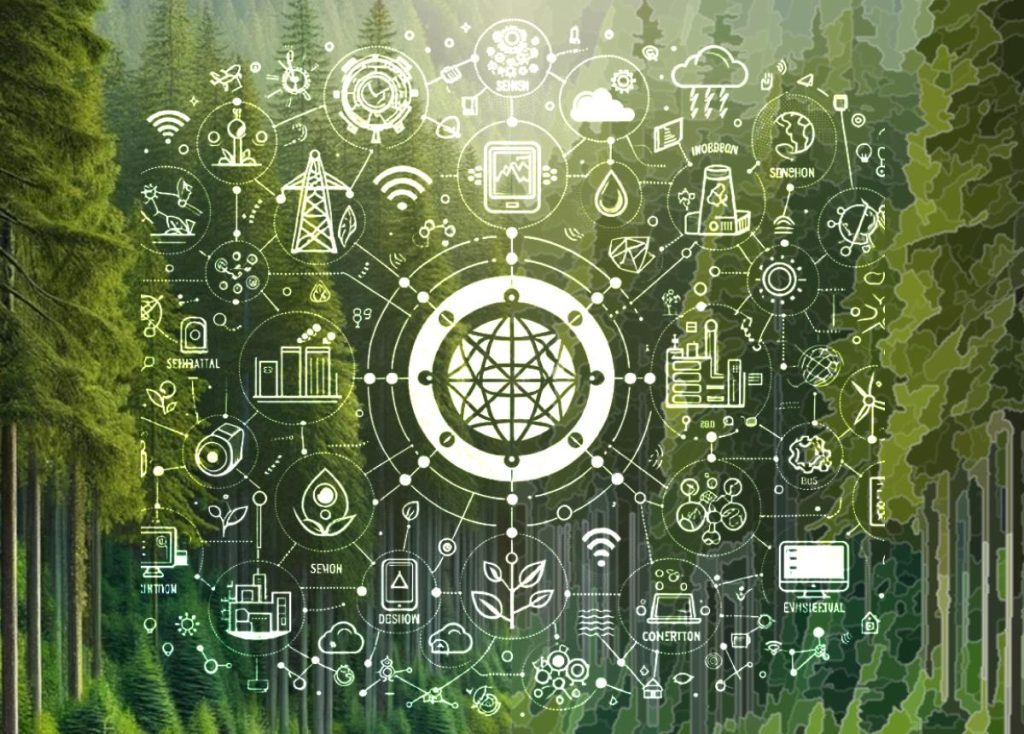Forestry is evolving, embracing the complexity of natural systems to ensure sustainability and resilience. At the heart of this transformation is the recognition of the critical importance of spatially heterogeneous forests. As elucidated by scientists who promote ecological forest management, diverse forest composition and high structural complexity are not just beneficial but essential for landscape functioning. Heterogeneous forests bolster biodiversity, enhance resilience to disturbances, and improve ecosystem services, from carbon sequestration to water regulation and habitat provision. The figure below illustrates three forest patches and their hypothetical departure from or transition towards forest structural heterogeneity.

Novel Tools for Complex Challenges
Recent advancements in technology have revolutionized our methods to assess forest composition, structure and function. Novel tools like soil sensors, portable weather stations, drone spectral imagery, and laser scanning enable precise measurements of canopy height, tree density, species composition, evapotranspiration, soil carbon storage, among others. The applications are vast, from estimating biomass and assessing structural heterogeneity, to monitoring changes due to disturbances or climate change. By providing detailed, accurate data, these tools have become indispensable in the sustainable management of forests, ensuring that human interventions are informed and targeted.
What is a Forest Digital Twin?
A recent approach gaining more attention in forestry is the development of digital twins – virtual replicas of physical forests. These digital counterparts are not static; they evolve in sync with their real-world counterparts, reflecting changes in the forest ecosystem over time. The information embedded in digital twins can be used to build decision support systems for operations management, implement and monitor forest health treatments, or build predictive models for the early detection of disturbances like forest fire. Additionally, digital twins are not limited to displaying present conditions; the information they provide can also be utilized for simulating future scenarios.
So, how can one create a forest digital twin? The answer starts with the Internet of Things (IoT) concept. IoT refers to a network of interconnected devices that collect and exchange data in real time. When applied to forestry, IoT paves the way for creating digital twins of forests, offering a virtual mirror of the natural environment. Sensors placed on trees, soil, towers, and even wildlife work in concert to provide a continuous stream of data. These data are transmitted to a computing environment, where foresters can analyze them to produce new information to guide forest management practices.
The following figure shows a LiDAR point cloud of a forest overlaying a digital terrain model (DTM). The figure also shows two dynamic maps depicting the normalized difference vegetation index (NDVI) and soil available water budget trends between June and September. Small icons exemplify a flying drone, and the location of 7 soil moisture sensors and one portable weather station.
Tip: You can right-click on the image and open it on a new tab to see it in its full resolution.
The application of IoT technologies to create digital twins of forests marks a significant leap forward in precision forestry. As IoT technology continues to evolve, the potential for creating more sophisticated and accurate forest digital twins grows. Future advancements may include enhanced sensor technology, better data integration capabilities, and more powerful visualization and simulation algorithms. Here at Resilient Forestry, we constantly work on developing and improving analytical tools to make the best use of data from multiple sources. We can help you to move towards a more productive and sustainable future, with science, IoT and digital twins at the forefront of this transition.


